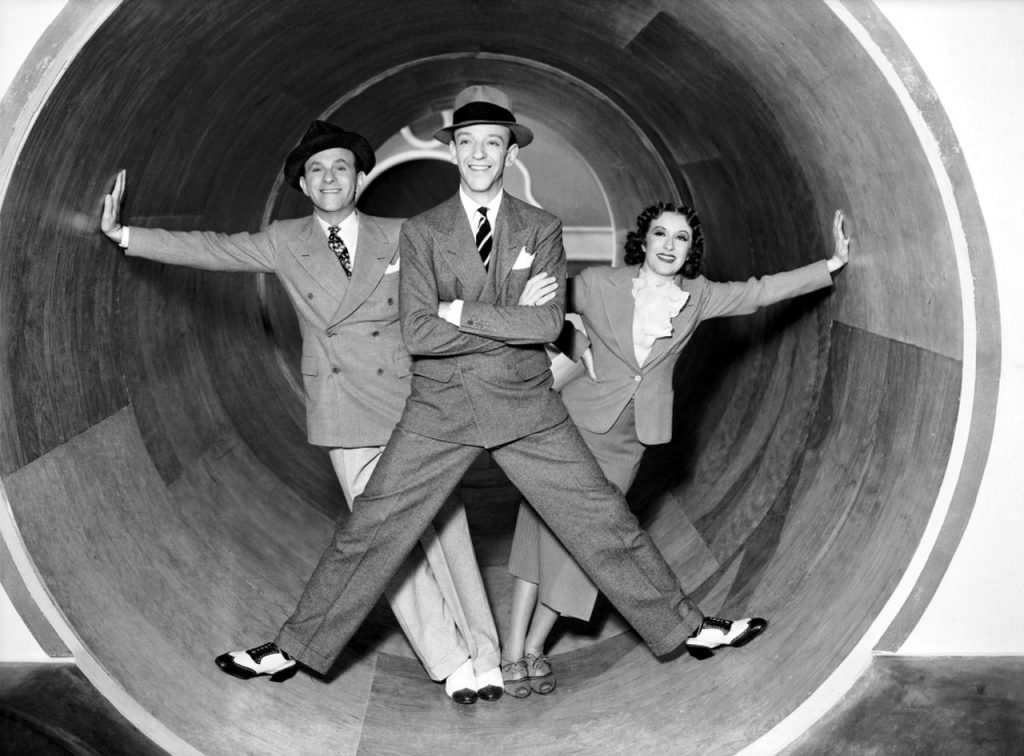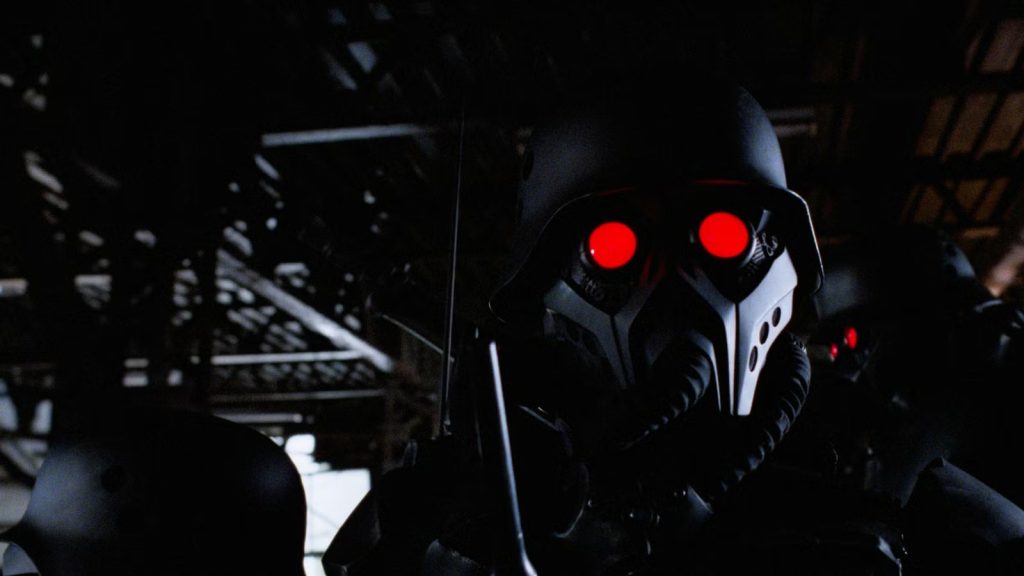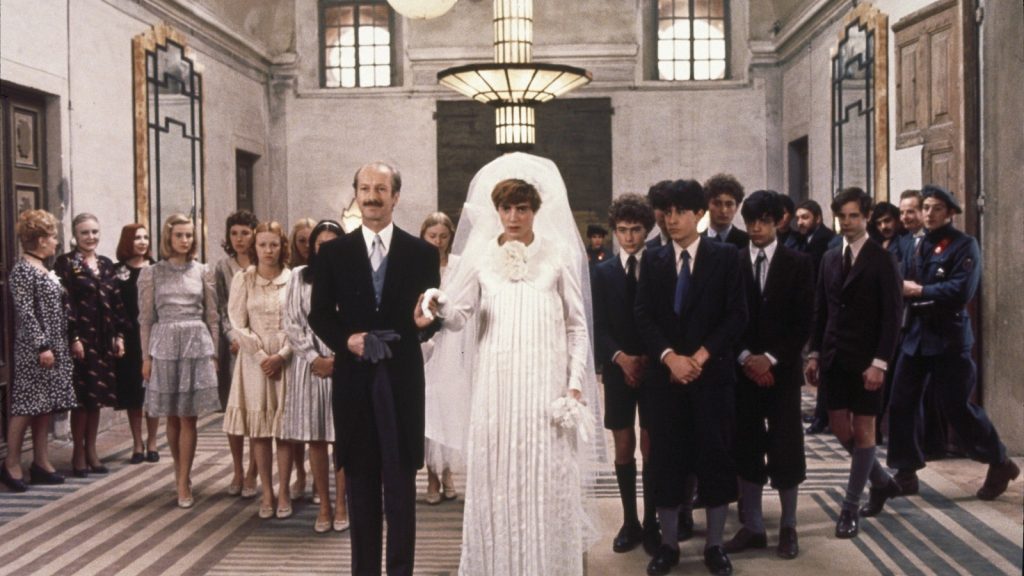The 1930s musicals of Fred Astaire and Ginger Rogers have become so beloved, such recognizable shorthand for the sophisticated entertainment of the era, that it’s easy to overlook the dizzyingly delightful work Astaire was doing outside of the partnership in that era, and after. One of the best of those movies, the 1937 musical comedy A Damsel in Distress, is currently streaming on HBO Max, and it offers up two great throwback entertainments in one: a breezy Astaire bauble, and a sparkling, personality-driven comedy as well.
The comedy is provided by George Burns and Gracie Allen, who were loaned out to RKO from Paramount, where they were making lower-budget comedies with the likes of W.C. Fields, the Marx Brothers, and Bob Hope. This was a high-caliber production; it was based on a P.G. Wodehouse novel (he also co-wrote the script), the director was George Stevens, the songs were by George and Ira Gerswhin (it was the last complete score George wrote before his death), and his leading lady would be Joan Fontaine. It makes sense that RKO wanted this Astaire vehicle to be a success; it was his first film for the studio without Rogers, and they would only make two more films together for RKO (and only one more after that).
The story is vintage Wodehouse, with Fontaine as the British Lady Alyce Marshmorton, whose single-girl status is of tremendous interest to all around her, and the film opens with her staff starting a betting pool to guess her eventual husband. Across the Atlantic, Jerry Halliday (Astaire) is a stage entertainer known for playing cads and ladies’ men, so his press agent George (Burns) is planting items in the papers that deliberate blur his real life with that stage persona. Halliday and Lady Alyce have a chance meeting, sparks fly, and well, you get the rest.
No disrespect to Wodehouse, but the plotting is the least notable aspect of A Damsel in Distress. It provides some opportunities for culture-shock laughs – particularly when Gracie finds herself rubbing elbows with British aristocracy – but the film is mainly worth seeing for two key, barely related elements.
First, there’s plenty of terrific vintage George and Gracie byplay. Gracie plays George’s (and thus also Halliday’s) secretary, a job she only has because her uncle was an early booster to the entertainer, and she has a blast playing the flighty office girl. Allen’s ongoing persona, in vaudeville, radio, television, and film, was that of the dizzy dame, the blissfully unaware airhead whose wholesale misunderstandings operated according to their own uproariously convoluted internal logic. The boss-and-secretary bits are as good as any the duo ever caught on film, beautifully capturing their energetic chemistry and gimcrack comic timing.
But the main attraction, unsurprisingly, are the songs and dances. The first one comes early, as Astaire is chased through the streets and winds up doing a bit of impromptu street entertainment; he moves beautifully, and (as he did for Astaire and Rogers in Swing Time the previous year), Stevens has the good sense to train his camera at Astaire’s full body, so we can better appreciate the gracefulness on display.

But the first great number made its way into the movie by accident. In his wonderful memoir Gracie: A Love Story, Burns recalls that he and his partner and wife Allen badly wanted to do the movie, but there was a tough condition: “Before RKO signed us for the movie they wanted us to dance for Fred Astaire and get his approval. That made me a little nervous.” Understandable! But Burns had an idea: “I remembered a vaudeville team named Evans and Evans who used to do a popular act in which they danced with whisk brooms. I didn’t know how good I’d look trying to keep pace with Fred Astaire, but I knew I’d be great compared to a whisk broom. So I invited one of the Evanses to come to California to teach the whisk broom dance to me and Gracie.”
Not only was the whisk broom dance good enough to get them the gig, Burns writes, “he thought the brooms were so good he also put them in the picture. So Gracie and I ended up teaching Fred Astaire how to dance.”
You can see why the audition worked like it did. The “Put Me to the Test” number, which features the whisk broom dance, is an absolute delight, and George and Gracie more than hold their own; she’s especially fun to watch, tip-tapping in her high heels right alongside one of the great hoofers of all time. And again, Stevens plays out the entire, long dance without close-ups or cuts, moving the camera “upstage” and “downstage,” but otherwise keeping us in a lovely, light-footed three-shot, to fully take in their interplay and acrobatics.
Gracie also shines in her performance of “Stiff Upper Lip” – sporting a lovely singing voice and cheerful delivery – which leads into “Fun House,” another marvelous three-person dance number, wherein our leads having a great time with the slides, funhouse mirrors, and moving surfaces at the amusement park. In stark contrast to “Put Me to the Test,” which keeps the camera loose and wide to create something like watching the performers on stage, “Fun House” is a sequence that vibrates with the magic of movies; it’s giving trick photography, it’s giving circling camerawork, it’s giving snappy cutting, and there’s a beautiful moment where a squished mirror creates us a three-shot of just their feet. It’s striking how well synchronized they were; George and Gracie weren’t dancers, per se, but they were vaudevillians, so they were. (The “Fun House” number won that year’s Oscar for Best Dance Direction, which was apparently a category once!)
“Things Are Looking Up,” Astaire’s garden dance scene with Fontaine, is also a thrill. Light, graceful, and romantic, it has what his best dances with Ginger had: a sense of using dance to tell a story, specifically one of attraction and affection. (Also, did literally anyone ever look more resplendent in a tuxedo?) And “Nice Work If You Can Get It” is both a closer and a show-stopper, its spotlight section finding Astaire tap-dancing while surrounded by a drum set, which he hits with a pair of drumsticks and his feet. (It is, again, shot in a continuous take.)
There’s a reason that Astaire and Rogers attained the cultural cache they did; there was a particular alchemy at work there, an indefinable quality that made magic when they shared the screen. Fontaine is no Ginger, nor are George and Gracie. But A Damsel in Distress has pleasures of it own, and is ripe for rediscovery.
“A Damsel in Distress” is streaming on HBO Max.



